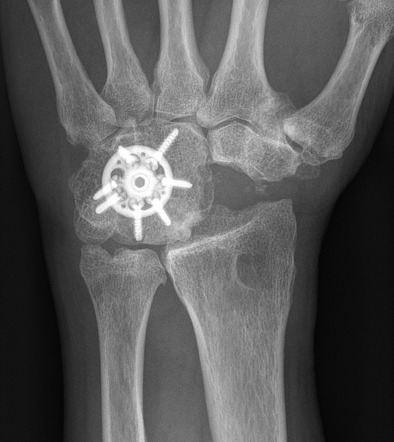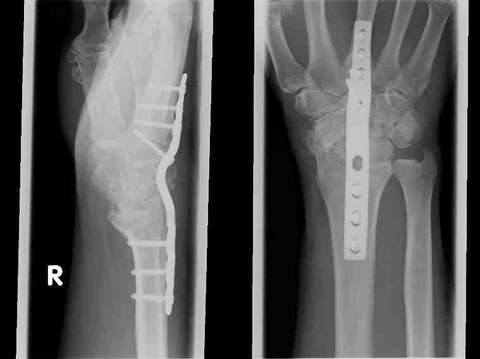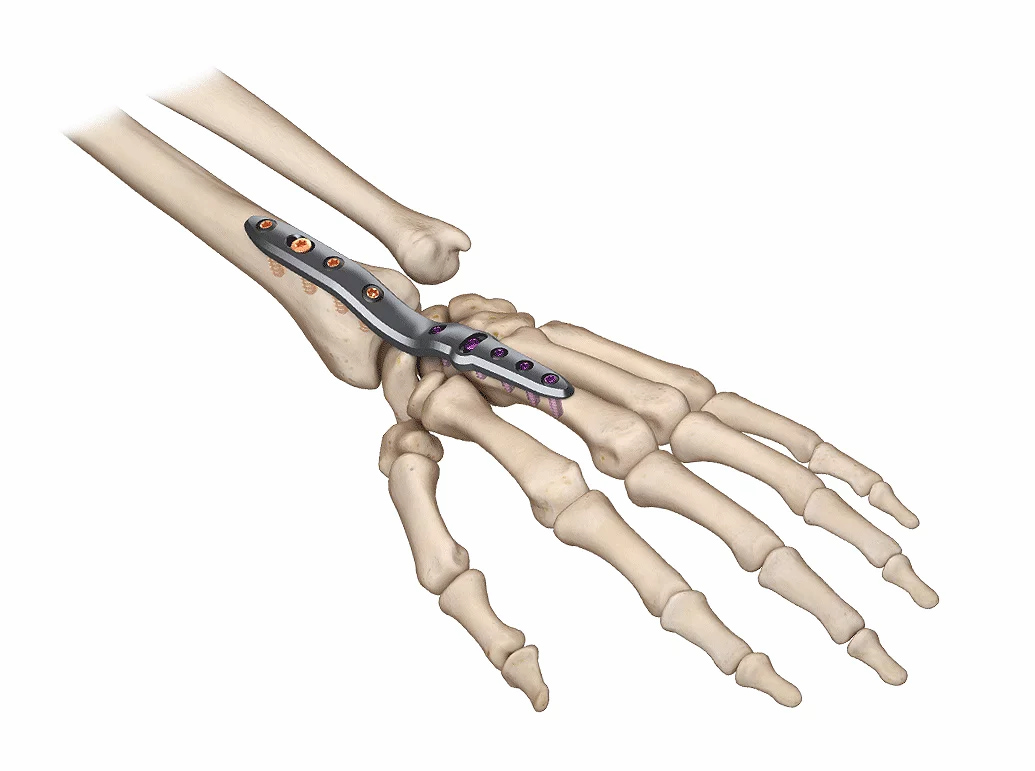Hand and wrist fusion surgery is a treatment option for individuals experiencing severe arthritis, chronic pain, or instability in the hand or wrist that has not improved with non-surgical treatments. This procedure aims to relieve long-lasting pain and restore stability by fusing the affected bones into one solid unit. Read more about arthritis of the hand and wrist below, or continue down the page for information about surgery.
Indications for surgery
Hand and wrist fusion surgery may be suitable in cases of:
- Severe osteoarthritis or rheumatoid arthritis causing pain and limited movement
- Ineffective medications, injections, or hand therapy exercises
- Severe ligament damage, fractures, or wrist deformities
What the surgery involves
The surgical procedure varies slightly depending on the specific joint(s) being fused but generally involves the following steps:
- Dr Lambers opens the joint and removes the damaged cartilage or worn bone surfaces
- If there is a gap between the bones, bone graft material may be used to encourage fusion and healing
- The bones are aligned and fixed together with screws, plates, or wires to hold them securely while they heal
- Over time, the bones grow together, eliminating joint motion and stabilising the affected area
- In cases of total wrist fusion, a long metal plate sits on the bones and spans the joint from the forearm to the hand, providing additional stability


What to expect after surgery
To protect the fusion site, your hand or wrist will be put in a cast or plastic splint for six weeks. After the cast is removed, gentle strengthening exercises will begin under the guidance of a therapist. You can gradually resume daily activities, but high-impact or strenuous activities are typically avoided until after three months.
You can usually resume driving once you are confident that you can safely operate a vehicle, typically after the cast is removed and the pain is manageable.
How long will you need to be in hospital?
Hand and wrist fusions are performed as day procedures and patients can return home the same day.
Usual recovery time
- 0-6 Weeks: Initial bone healing with use of a splint or cast
- 6-12 Weeks: Strengthening exercises and gradual resumption of daily activities
- 3 Months–1 Year: Full recovery with continued improvement in strength and function
Potential risks
- Failure of the bones to successfully fuse which may require further surgery
- Loosening, fracture, or irritation of the hardware
- Rubbing or damage to nearby tendons
- Scar sensitivity, worsening of carpal tunnel syndrome, or persistent pain
Is hand or wrist fusion surgery right for you?
This surgical procedure is a significant choice that deserves careful consideration. Take the time to discuss your goals, potential outcomes, and alternatives with Dr Lambers. While this procedure can greatly improve the quality of life for the right candidate, it’s important to feel confident in your decision before moving forward.

